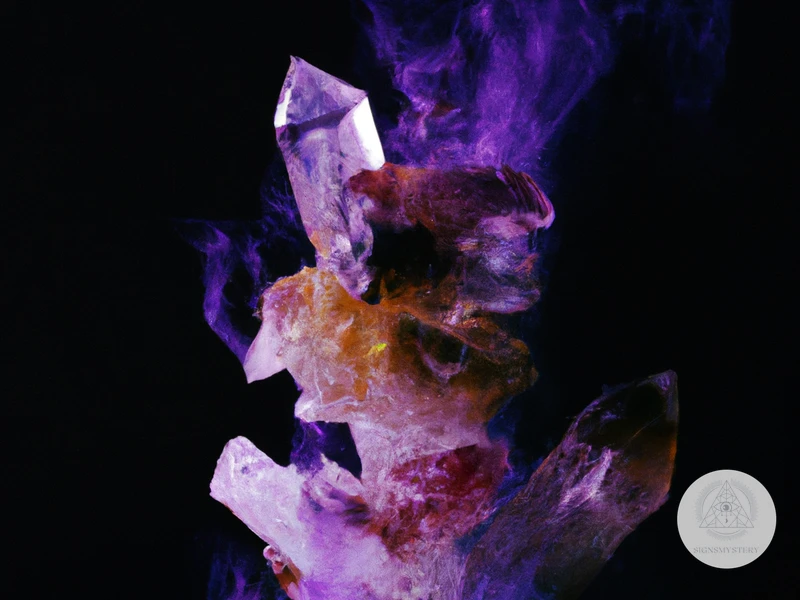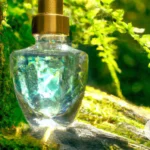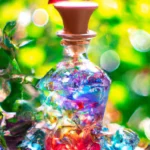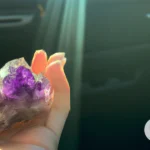Handling toxic crystals for elixirs requires utmost caution and adherence to safety protocols. These sparkling stones may possess mesmerizing beauty, but they also possess potential hazards that need to be recognized and addressed. In this article, we will explore the crucial safety precautions that should be taken when dealing with toxic crystals, along with the importance of protective gear. We will also delve into safe practices for creating elixirs and what steps to take in case of accidental exposure. So, let us embark on a journey of discovery to ensure the well-being and harmony of both ourselves and the mystical crystals we hold in our hands.
Why Safety Precautions are Important
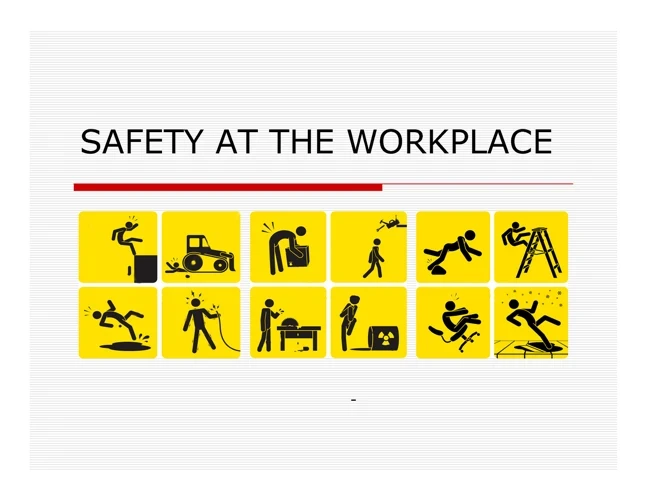
To fully comprehend the significance of safety precautions when handling toxic crystals for elixirs, it is vital to understand the nature of these crystals. Certain crystals, such as cinnabar or malachite, contain toxic elements like mercury or copper respectively, which can be harmful when mishandled or ingested. These crystals may release toxic substances when exposed to water or other elements, making it crucial to handle them with care to avoid any potential health risks.
Handling toxic crystals without taking proper safety precautions can lead to a range of potential risks. Direct contact with the skin or accidental ingestion can cause adverse reactions, such as skin irritation, burns, or even poisoning. Inhaling the toxic fumes or dust particles released by these crystals can also have respiratory and allergic reactions. It is essential to understand and acknowledge these risks to protect oneself and prevent any harm that could arise from mishandling toxic crystals.
Protective gear plays a vital role in ensuring the safety of individuals handling toxic crystals. Properly equipping oneself with gloves, goggles, and a lab coat or protective clothing creates a barrier between the skin, eyes, and the hazardous crystals. Gloves act as a physical barrier, preventing direct contact and reducing the risk of absorption through the skin. Goggles protect the eyes from any splashes or airborne particles, ensuring no harm comes to the sensitive eye tissues. Wearing a lab coat or protective clothing further minimizes the risk of accidental contact or ingestion. By utilizing appropriate protective gear, individuals can significantly reduce the chances of any adverse effects resulting from handling toxic crystals.
Understanding the potential risks associated with toxic crystals, it becomes clear why strict safety precautions are necessary. Now, let’s delve into the essential safety measures that should be taken when handling toxic crystals for elixirs to ensure the overall well-being and harmony of those engaging in this practice.
1. Understanding Toxic Crystals
Understanding toxic crystals is crucial when it comes to handling them safely. Each toxic crystal has unique properties and contains elements that can pose health risks if not handled carefully. It is essential to research and identify the specific crystals that fall under this category. Some common examples of toxic crystals include cinnabar, malachite, and pyrite. Cinnabar, for instance, contains mercury, which can be highly toxic if ingested or inhaled. Malachite contains copper, and if mishandled, it can cause skin irritation or allergic reactions. Pyrite, also known as Fool’s Gold, can create harmful sulfuric fumes when exposed to moisture. By understanding the properties of toxic crystals, individuals can take appropriate precautions to ensure their safety. It is recommended to have a comprehensive reference guide or consult an expert to gain in-depth knowledge about various toxic crystals and their potential risks. Additionally, regular updates on crystal safety guidelines can further enhance understanding and prevent any avoidable accidents or adverse effects. Remember, knowledge is the foundation of safety when working with toxic crystals for elixirs, allowing us to appreciate their beauty while keeping ourselves and others safe.
2. Potential Risks of Handling Toxic Crystals
Handling toxic crystals without proper precautions can expose individuals to a range of potential risks. It is important to be aware of these risks to prioritize safety and minimize any potential harm. Here are some of the potential risks associated with handling toxic crystals:
1. Skin Irritation and Burns: Direct contact with toxic crystals can cause skin irritation, redness, or even burns, especially if the crystals contain corrosive substances like sulfuric acid or copper. It is crucial to avoid direct contact and use gloves or protective clothing to prevent any skin-related issues.
2. Respiratory Issues: Inhaling toxic fumes or dust particles released by certain crystals can lead to respiratory problems, such as coughing, wheezing, or shortness of breath. It is essential to handle toxic crystals in well-ventilated areas and consider wearing a mask when working with them.
3. Allergic Reactions: Some individuals may be allergic to certain crystals, developing symptoms like itching, swelling, or a rash upon contact. It is important to be aware of any known allergies and take appropriate precautions to avoid exposure to allergens.
4. Digestive Problems and Poisoning: Accidental ingestion of toxic crystals can have severe consequences, including nausea, vomiting, abdominal pain, or even poisoning. It is essential to avoid ingesting crystals and ensure they are stored safely out of reach.
5. Eye Injuries: Splashing or accidental contact of toxic crystals with the eyes can cause eye irritation, redness, or even damage to the cornea. Protective goggles should always be worn to prevent any harm to the eyes.
By understanding these potential risks, individuals can prioritize their safety and take necessary precautions to prevent any harm when handling toxic crystals for elixirs. It is important to be informed and responsible while working with these powerful, yet potentially hazardous, natural elements.
3. Importance of Protective Gear
The importance of protective gear when handling toxic crystals cannot be overstated. As mentioned earlier, toxic crystals contain substances that can be harmful if they come into contact with the skin, eyes, or are accidentally ingested. Wearing the appropriate protective gear is essential for ensuring the safety and well-being of individuals handling these crystals.
Gloves are a crucial component of protective gear when working with toxic crystals. They act as a barrier between the skin and the crystals, preventing direct contact and minimizing the risk of absorption through the skin. It is recommended to use gloves made from materials such as nitrile or neoprene, as they are resistant to chemicals and provide better protection.
In addition to gloves, wearing goggles or safety glasses is essential to protect the eyes from any splashes or airborne particles that may be released during the handling process. The eyes are a delicate and sensitive area, and any contact with toxic substances can result in irritation or injury. It is important to choose appropriate eye protection that fits securely and provides full coverage.
Wearing a lab coat or protective clothing is highly recommended to minimize the risk of accidental contact or ingestion. These coverings act as an additional layer of protection against spills, splashes, or dust particles that may come into contact with the body.
By wearing the necessary protective gear, individuals can significantly reduce the risk of harm when handling toxic crystals. It is important to remember that even if a crystal may appear harmless, it is always better to err on the side of caution and take the necessary precautions to protect oneself. A moment of carelessness can have serious consequences, so the importance of protective gear cannot be emphasized enough.
Now that we understand the importance of protective gear, let’s move on to exploring the crucial safety precautions that should be taken when handling toxic crystals for elixirs, starting with the first safety measure: researching and identifying the toxic crystals.
Important Safety Precautions
Before working with crystals, it is essential to research and identify which crystals are toxic. There are numerous resources available online or in crystal books that provide comprehensive information on the toxicity of different crystals. Familiarize yourself with the specific characteristics and hazards associated with each crystal you plan to handle. This knowledge will empower you to take the necessary precautions to ensure your safety.
When handling toxic crystals, always wear gloves made of a material that provides adequate protection against the specific hazards associated with the crystals you are working with. Nitrile gloves are recommended as they provide excellent chemical resistance. Additionally, consider wearing a lab coat or protective clothing to minimize the risk of crystals coming into direct contact with your skin or clothing.
To prevent any potential absorption of toxins through the skin, it is crucial to avoid direct skin contact with toxic crystals. If it is necessary to handle the crystals directly, ensure that you are wearing gloves and take extra care to avoid any accidental breaches in your protective barrier.
Toxic crystals can release harmful fumes or dust particles into the air, especially when exposed to water or other substances. It is essential to handle these crystals in well-ventilated areas to minimize the risk of inhaling any toxic substances. Open windows or use a fume hood to ensure proper air circulation during the handling process.
Never ingest or inhale toxic crystals, as they can lead to severe health issues. Accidental ingestion can occur through the transfer of crystals to the mouth from contaminated hands or surfaces. Inhalation of crystal dust or fumes can happen if proper precautions are not taken. It is crucial to always handle toxic crystals with care and avoid any actions that could lead to ingestion or inhalation.
By following these important safety precautions, you can minimize the risks associated with handling toxic crystals appropriately. Now that you are equipped with the knowledge of precautions let’s explore safe practices for creating elixirs using toxic crystals.
1. Research and Identify Toxic Crystals
When it comes to handling toxic crystals for elixirs, the first and most critical safety precaution is to thoroughly research and identify which crystals are toxic. Not all crystals possess harmful properties, so being knowledgeable about the specific crystals you are working with is essential. Consult reputable sources such as crystal identification books, online crystal databases, or seek guidance from experienced crystal experts.
During your research, pay close attention to the chemical composition of each crystal and identify any potential toxic elements they may contain. Some common examples of toxic crystals include cinnabar, malachite, or galena. Understanding the hazardous properties and potential health risks associated with these crystals is crucial for taking appropriate precautions.
Once you have identified the toxic crystals in your collection, it is advisable to keep them separate from non-toxic crystals and properly label them to avoid any mix-ups or accidental usage. Consider exploring safe alternatives or substitute crystals with similar energetic properties. It is always better to prioritize the health and well-being of yourself and others when working with potentially harmful materials.
2. Use Gloves and Protective Clothing
When handling toxic crystals for elixirs, the use of gloves and protective clothing is paramount. Gloves act as a crucial barrier between the skin and the toxic properties of the crystals. It is essential to choose the appropriate gloves that are specifically designed for handling hazardous materials. Nitrile gloves are commonly recommended as they provide excellent protection against chemical substances. These gloves are resistant to punctures and provide a reliable barrier against the harmful effects of toxic crystals. They should fit snugly to ensure there are no gaps for any potential contact. By wearing gloves, individuals can significantly reduce the risk of skin irritation, burns, or absorption of toxic substances.
In addition to gloves, wearing protective clothing further minimizes the chances of accidental contact with toxic crystals. A lab coat or an apron made of a suitable protective material acts as an additional shield against any potential splashes or contact with the skin. The clothing should cover the arms and legs completely to prevent any exposed areas where crystals may come into contact with the skin. It is crucial to have dedicated clothing specifically for handling toxic crystals to avoid contamination of regular attire.
By using gloves and protective clothing, individuals can create a physical barrier, ensuring their safety while handling toxic crystals. Additionally, it is important to remember the significance of proper disposal of gloves and protective clothing after use. This prevents any potential cross-contamination or unintentional exposure to the toxic substances. Taking these precautions will help maintain a safe environment for handling toxic crystals and reduce the risk of any adverse effects.
Now that we understand the importance of using gloves and protective clothing, let’s explore another essential safety precaution when working with toxic crystals – avoiding direct skin contact.
3. Avoid Direct Skin Contact
When handling toxic crystals, it is imperative to avoid direct skin contact to minimize the risk of absorption or irritation. The toxic elements present in these crystals can easily seep into the skin and cause adverse effects. Here are some important measures to take:
1. Wear Protective Gloves: Always wear gloves made of materials that provide a barrier between your skin and the crystals. Nitrile or latex gloves are commonly used for this purpose. These gloves should fit properly to ensure there are no gaps for the crystals to come into contact with your skin.
2. Use Tongs or Tools: Whenever possible, use tools like tweezers or tongs to handle the crystals instead of directly using your bare hands. This further reduces the chances of accidental contact.
3. Be Mindful of Cuts or Open Wounds: If you have any cuts, abrasions, or open wounds on your hands or arms, it is essential to avoid handling toxic crystals altogether. The open skin can easily absorb the toxic substances, leading to potential health risks.
4. Proper Handwashing: After handling toxic crystals or removing gloves, thoroughly wash your hands with soap and water. This helps remove any residue that may have come in contact with your skin.
5. Consider a Crystal Charging Method: Some crystals, like lapis lazuli, require cleansing and recharging. Instead of direct skin contact, explore alternative methods like placing the crystals on a cleansed and charged crystal grid layout.
By following these precautions, you can minimize the chances of harm to your skin and overall well-being. Remember, it is always better to err on the side of caution when it comes to handling toxic crystals.
4. Handle Toxic Crystals in Well-Ventilated Areas
When working with toxic crystals, it is crucial to handle them in well-ventilated areas. This precaution serves to minimize the risk of inhaling any toxic fumes or dust particles that may be released during the handling process. Toxic crystals, such as pyrite or galena, can emit harmful substances into the air when they come into contact with moisture or are disturbed. These particles can be especially dangerous when inhaled and may cause respiratory irritation or other health problems.
To ensure proper ventilation, it is recommended to handle toxic crystals near an open window or in a well-ventilated room. This allows for the circulation of fresh air, helping to disperse any potentially harmful particles that might be released. If working in a confined space, it is advisable to use additional means of ventilation, such as a fan or air purifier, to create a constant flow of fresh air.
In addition to providing ventilation, it is important to minimize the risk of spreading toxic particles throughout the environment. To prevent the potential contamination of surfaces or other objects, it is advisable to work on a clean, dedicated workspace. This can be a designated area or a tray lined with protective material. By containing the handling of toxic crystals to a specific space, the risk of unintentional exposure or cross-contamination is significantly reduced.
By handling toxic crystals in well-ventilated areas, individuals can safeguard their respiratory health and minimize the risk of inhaling any harmful particles. Ensuring proper ventilation not only protects the individual handling the crystals but also creates a safe environment for others nearby. Now that we have covered the importance of ventilation, let’s move on to the precautions regarding ingestion and direct skin contact when handling toxic crystals for elixirs.
5. Avoid Ingesting or Inhaling Toxic Crystals
When handling toxic crystals for elixirs, it is of utmost importance to avoid ingesting or inhaling these hazardous substances. Ingestion or inhalation of toxic crystals can lead to severe health complications and should be strictly avoided. To ensure safety, follow these precautions:
Avoid Ingesting Toxic Crystals:
Ingesting toxic crystals can have harmful effects on the body, ranging from digestive issues to poisoning. It is crucial to always wash hands thoroughly after handling toxic crystals to prevent accidental ingestion. Refrain from touching your face or mouth while working with these crystals, as it can transfer the toxic substances to the mucous membranes. Additionally, be cautious when storing toxic crystals and ensure they are kept out of reach from children or pets who may accidentally ingest them.
Avoid Inhaling Toxic Crystals:
Inhaling the fumes or dust particles released by toxic crystals can pose serious respiratory risks. When grinding, cutting, or working with these crystals, it is essential to use proper ventilation or work in well-ventilated areas. Breathing masks or respirators can offer added protection from inhaling any airborne particles. It is crucial to note that some crystals, when heated or burned, can release toxic fumes. Always handle these crystals with caution and avoid any activities that may lead to their combustion.
By strictly adhering to these guidelines and avoiding the ingestion or inhalation of toxic crystals, individuals can mitigate the potential health risks associated with handling these substances. Remember, safety should always be the top priority when working with hazardous materials to ensure a positive and secure experience.
Safe Practices for Making Elixirs
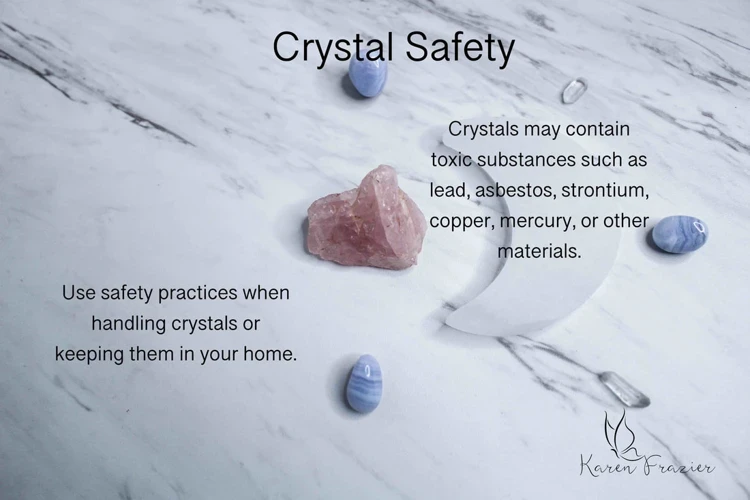
When it comes to making elixirs with toxic crystals, it is crucial to follow safe practices to minimize risks and ensure the well-being of individuals involved. One safe method is the indirect method, also known as crystal essence. In this method, the toxic crystal is not submerged directly in water but is placed in a separate container or wrapped in a cloth. This allows the energy of the crystal to infuse into the water without the physical contact between the crystal and the liquid. It is important to note that the water used should be purified and of high quality. Another safe practice is to utilize a crystal charging method to harness the crystal’s energy safely. This involves placing the toxic crystal near a non-toxic crystal, such as clear quartz, which acts as a buffer and absorbs the energy of the toxic crystal. The non-toxic crystal can then be used to charge the water or elixir, ensuring that the toxic crystal remains separated. Additionally, it is crucial to cleanse and recharge the toxic crystals regularly to maintain their energetic balance. Different cleansing methods, such as smudging, sunlight, moonlight, or using other non-toxic crystals, can be employed. By following these safe practices, individuals can harness the healing properties of crystals while minimizing the potential risks associated with handling toxic crystals for elixirs.
1. Indirect Method: Crystal Essence
The indirect method, known as crystal essence, is a safe practice for creating elixirs using toxic crystals. This method involves harnessing the energy and healing properties of the crystal without direct contact. To create a crystal essence, you will need a glass or crystal vessel, purified water, and a secondary crystal that is safe for direct immersion.
Start by thoroughly cleansing both the vessel and the secondary crystal using a gentle, non-toxic cleanser. This step ensures that no residual energy or impurities interfere with the essence creation process.
Next, place the toxic crystal near the outside of the vessel, ensuring it does not touch the water directly. The energy and vibrations of the toxic crystal will transfer to the water, infusing it with its unique properties.
Place the secondary crystal directly into the water, allowing it to further enhance the essence with its own beneficial energies. This secondary crystal serves as a bridge, creating a safe and indirect connection between the toxic crystal and the water.
Let the essence sit undisturbed for a period of time, allowing the energy transfer to occur gradually. The recommended duration varies depending on the specific crystal and its properties. Refer to reliable sources or consult with experts to determine the ideal timeframe for creating
Subscribe to Our Newsletter
Sign up to receive the latest news and updates.
Once the essence is ready, it can be used in various ways, such as sipping it, adding it to baths, or using it in energetic practices like crystal healing or meditation. Remember to always handle the crystal essence with care and store it in a safe place when not in use, preferably away from sunlight and electromagnetic frequencies that could potentially alter its composition.
By utilizing the indirect method of crystal essence, individuals can enjoy the benefits of toxic crystals while minimizing the risks associated with direct contact. So, embrace the power of crystals and explore the transformative potential they hold within, knowing that safety and well-being are at the forefront of your crystal elixir journey.
2. Using a Crystal Charging Method
When using a crystal charging method, it is important to follow safety precautions to ensure the process is conducted safely and effectively. Here are some steps to consider:
1. Cleanse the crystal: Before beginning the charging process, it is crucial to cleanse the crystal to remove any negative energies or impurities. This can be done using various methods such as smudging, placing it in a bowl of saltwater, or using other cleansing techniques. (For more information on cleansing, you can refer to our article on how to cleanse and recharge crystals).
2. Choose an appropriate charging method: There are several ways to charge crystals, depending on their properties and your intention. Common methods include placing the crystal under the moonlight or sunlight, burying it in the earth, or immersing it in a bowl of sea salt. Research and understand the specific requirements of each crystal type before selecting an appropriate charging method.
3. Set your intention: Before charging the crystal, set a clear intention for what you want to amplify or manifest. This will help to align the energy of the crystal with your desired outcome.
4. Place the crystal in a designated area: Find a safe and clean space to place the crystal during the charging process. You can use a crystal grid layout to enhance the energy flow or simply place the crystal on a natural surface like a piece of quartz or selenite.
5. Allow time for charging: The length of time required for charging can vary depending on the crystal and the method used. Some crystals may require a few hours, while others might benefit from being left charging overnight. Follow the recommended guidelines for each crystal to ensure optimal results.
Remember, it is important to handle crystals with care and mindfulness throughout the charging process. Avoid touching the crystal directly with bare hands, as oils or dirt from your skin can affect its energy. Use a pair of gloves or a cloth to handle the crystal if necessary.
By following these safety precautions and best practices when using a crystal charging method, you can harness the positive energy and amplify the intentions you have set for your crystals.
3. Cleansing and Charging Toxic Crystals
Cleansing and charging toxic crystals is an important step to maintain their energetic properties while ensuring safe handling. However, due to their toxic nature, special precautions must be taken during the cleansing and charging process.
1. Choose Safe Cleansing Methods: When cleansing toxic crystals, it is essential to avoid methods that involve direct contact with water or other substances that can potentially release toxins. Instead, opt for dry cleansing methods like using purified smoke from herbs like sage or palo santo. This method allows for the removal of negative energy without risking the release of harmful toxins.
2. Utilize Protective Gear: Before handling toxic crystals for cleansing, make sure to wear appropriate protective gear such as gloves and a protective face mask. The gloves act as a barrier against direct contact, while the mask prevents the inhalation of any dust or fumes that may be released during the process.
3. Handling and Placement: To prevent accidental exposure, it is crucial to handle toxic crystals with caution. Place them in a designated container or on a protective surface that can be easily cleaned afterward. Avoid touching the crystals directly with bare hands and use tools like tongs or tweezers if necessary.
4. Charging Methods: To recharge toxic crystals, choose methods that do not involve direct contact with the crystal or the use of water. Some safe options include placing the crystal on a quartz cluster or using the energy from the sun or moon. These methods allow for recharging while minimizing the risk of toxin release.
By following these precautions during the cleansing and charging of toxic crystals, individuals can ensure their energetic properties are maintained while keeping themselves safe. It is important to exercise caution and refer to reliable sources or consult with experienced crystal practitioners for further guidance on safe practices.
[Internal Links] To explore other powerful crystal practices, you can learn more about the benefits of creating a crystal grid layout. Additionally, those interested in the healing properties of crystals for emotional well-being may find value in exploring crystals for depression relief.What to Do in Case of Accidental Exposure
In the unfortunate event of accidental exposure to toxic crystals, it is crucial to act swiftly and take the appropriate measures. Immediate first aid should be administered to minimize the potential harm caused by the exposure. If there is contact with the skin, immediately rinse the affected area with water for at least 15 minutes. It is important to remove any contaminated clothing or accessories during this process. If the eyes are affected, flush them with water for at least 20 minutes, ensuring that the water is directed away from the unaffected eye. If the toxic crystals have been ingested, do not induce vomiting unless instructed by medical professionals.
Seeking medical attention is critical following any accidental exposure to toxic crystals. Contact the local poison control center or emergency services for guidance and inform them about the nature of the exposure. Be prepared to provide detailed information about the specific crystal involved and any symptoms experienced. Medical professionals will be able to assess the situation and provide appropriate advice or treatment. They may ask you to save any remaining crystals or packaging for identification purposes, so do not discard them.
Remember to stay calm and avoid panicking in such situations, as panic may interfere with your ability to handle the situation effectively. Adhering to these steps will help ensure that any potential risks or harm from accidental exposure to toxic crystals are minimized, and prompt medical attention is received.
It is always better to prevent accidents from happening in the first place by following the necessary safety precautions, but being prepared for potential mishaps is equally important. Stay safe and handle toxic crystals responsibly, prioritizing your well-being and the well-being of those around you.
1. Immediate First Aid
In the unfortunate event of accidental exposure to toxic crystals, knowing the proper steps for immediate first aid is crucial. Here is a step-by-step guide to follow in such situations:
1. Rinse the Affected Area: If there is direct contact with toxic crystals, immediately rinse the affected area with cool water. This helps to remove any crystal residue or toxins from the skin. Allow the water to run over the area for at least 10 minutes. Avoid using warm or hot water, as it can open the pores and potentially increase absorption.
2. Remove Contaminated Clothing: If the crystals have come into contact with clothing, carefully remove the contaminated garments. Be cautious not to spread the crystals or toxins to other areas of the body.
3. Do Not Apply Creams or Lotions: Avoid applying any creams, lotions, or ointments to the affected area. This could potentially trap any remaining toxins against the skin, exacerbating the situation.
4. Seek Medical Advice: After following the initial first aid steps, it is essential to seek medical advice. Contact a healthcare professional or a local poison control center to receive guidance on further actions to be taken. Provide them with details regarding the specific toxic crystal involved, as it will assist them in providing accurate advice.
5. Keep Calm and Monitor Symptoms: While waiting for medical advice, it is crucial to remain calm and vigilant. Monitor for any symptoms or signs of an adverse reaction such as redness, swelling, pain, dizziness, difficulty breathing, or nausea. If severe symptoms occur, call emergency services immediately.
Remember, immediate first aid is essential, but it does not replace the need for professional medical attention. Always consult a healthcare professional promptly in cases of accidental exposure to toxic crystals. By taking swift action and seeking appropriate medical guidance, potential risks and harm can be minimized.
2. Seeking Medical Attention
In the unfortunate event of accidental exposure to toxic crystals, seeking immediate medical attention is crucial. It is essential to understand the potential health risks associated with toxic crystal exposure and prioritize one’s well-being. Here are the steps to follow when seeking medical attention:
1. Assess the situation: Evaluate the severity of the exposure and any accompanying symptoms. If the individual is experiencing severe symptoms such as difficulty breathing, severe allergic reactions, or loss of consciousness, call emergency services immediately.
2. Contact a healthcare professional: If the symptoms are less severe, reach out to a healthcare professional for guidance. This can be a primary care physician, urgent care facility, or poison control center. Describe the situation and provide details about the toxic crystals involved.
3. Follow medical advice: Depending on the circumstances, the healthcare professional may recommend actions to take at home or may advise visiting a medical facility for further evaluation. It is crucial to follow their instructions carefully.
4. Provide necessary information: When seeking medical attention, be prepared to share relevant details about the exposure. This includes the type of crystal involved, the duration of exposure, and any symptoms experienced. This information will assist the healthcare professional in determining the appropriate course of action.
5. Keep any collected samples: If possible, retain a small sample of the toxic crystal or bring it with you to the medical facility. This can aid in identification and guide appropriate treatment.
Remember, even if symptoms are initially mild, it is better to err on the side of caution and seek medical attention. Prompt medical intervention can help mitigate potential complications and ensure proper treatment. Take immediate action when accidental exposure occurs to protect your health and well-being.
Conclusion
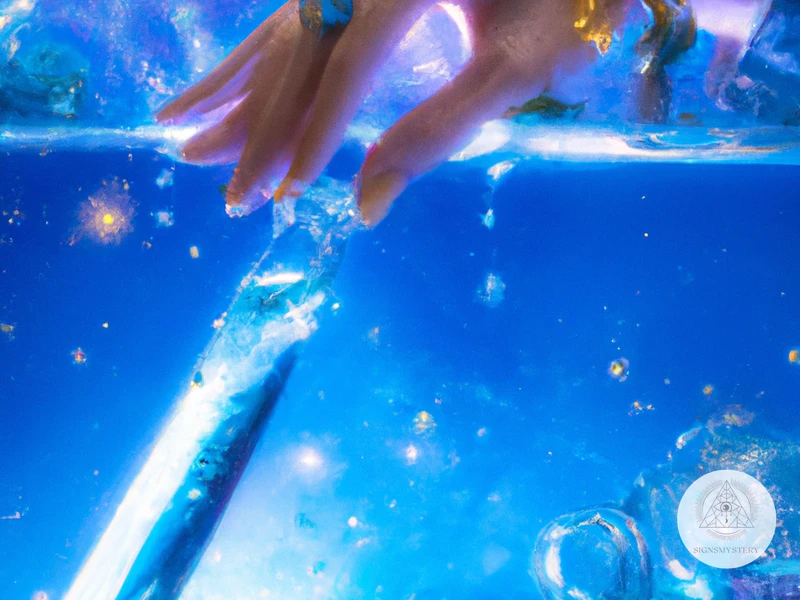
In conclusion, when it comes to handling toxic crystals for elixirs, safety precautions are of utmost importance. Understanding the nature of toxic crystals and the potential risks they pose is essential for anyone engaging in this practice. Protective gear, including gloves, goggles, and protective clothing, acts as a barrier, safeguarding individuals from direct contact and harmful effects. Proper research and identification of toxic crystals are crucial in order to avoid mishaps and accidents. Handling toxic crystals in a well-ventilated area further reduces the risk of inhaling harmful particles or fumes. It is imperative to avoid ingesting or inhaling toxic crystals to prevent adverse health consequences. When creating elixirs, using indirect methods like crystal essence or crystal charging can be a safer alternative. Cleansing and charging toxic crystals regularly ensures their optimal energy and prevents the buildup of any toxins. In case of accidental exposure, immediate first aid should be administered, and medical attention should be sought promptly. By following these safety precautions and implementing safe practices, individuals can create a harmonious and secure environment when working with toxic crystals for elixirs. Let us embrace the beauty and power of these mystical stones while prioritizing our well-being and safety.
Frequently Asked Questions
1. Can all crystals be used in elixirs?
Not all crystals are suitable for elixirs. Some crystals are toxic and can release harmful substances when exposed to water or other liquids. It is essential to research and identify the crystals that are safe for use in elixirs.
2. How do I determine if a crystal is toxic?
To identify toxic crystals, you can refer to reliable crystal identification guides or consult with experts in the field. They can provide detailed information about the chemical composition and potential hazards associated with different crystals.
3. Do I need to wear gloves when handling all crystals?
To ensure safety, it is recommended to wear gloves when handling crystals, especially if you are unsure about their toxicity. Gloves act as a protective barrier and help prevent direct contact with any potentially harmful substances.
4. Can I handle toxic crystals with bare hands if I wash them afterwards?
No, it is not advisable to handle toxic crystals with bare hands, even if you plan to wash them afterward. Some toxic substances can be absorbed quickly through the skin, and washing may not entirely remove all traces of toxicity.
5. How should I handle toxic crystals in a well-ventilated area?
When handling toxic crystals, it is important to choose a well-ventilated area to minimize the risk of inhaling any toxic fumes or dust particles. Good ventilation helps disperse any hazardous substances and maintains a safer environment.
6. Can I consume elixirs made from toxic crystals?
No, it is highly advised against consuming elixirs made from toxic crystals. Ingesting these substances can lead to serious health complications and should be avoided to ensure personal well-being.
7. What is the indirect method for making crystal essences?
The indirect method involves placing the crystal outside the container of water and allowing its energy to infuse into the water without direct contact. This method helps avoid the potential risks associated with toxic crystals.
8. How do I cleanse and charge toxic crystals?
Cleansing and charging toxic crystals can be done by using methods like smudging with sacred herbs, placing them in sunlight or moonlight, or utilizing other crystals with cleansing properties, such as clear quartz or selenite.
9. What kind of first aid should I administer in case of accidental exposure?
In case of accidental exposure to toxic crystals, immediate first aid includes rinsing the affected area with plenty of clean water, removing contaminated clothing, and seeking professional medical advice if symptoms persist or worsen.
10. When should I seek medical attention after exposure to toxic crystals?
If you experience severe symptoms after exposure to toxic crystals, such as difficulty breathing, nausea, dizziness, or a severe skin reaction, it is essential to seek immediate medical attention to ensure proper diagnosis and treatment.
References
Frequently Asked Questions
FAQs about Handling Toxic Crystals for Elixirs
Here are some frequently asked questions about handling toxic crystals for elixirs, along with brief answers:
1. Can I handle toxic crystals bare-handed?
No, it is highly recommended to use gloves and other protective gear when handling toxic crystals to prevent direct skin contact.
2. What are the potential risks of handling toxic crystals?
Handling toxic crystals without proper precautions can lead to skin irritation, allergic reactions, or even more severe health issues.
3. Is it safe to handle toxic crystals in any environment?
No, it is important to handle toxic crystals in well-ventilated areas to minimize the risk of inhaling any toxic fumes or particles.
4. How can I identify which crystals are toxic?
It is crucial to research and identify the specific crystals you are working with to determine if they are toxic or safe for handling.
5. Is there a safe method for making elixirs with toxic crystals?
Yes, there are safe practices such as the indirect method of creating crystal essence or using a crystal charging method to make elixirs without direct contact.
6. Can I consume or ingest toxic crystals in any form?
No, it is important to avoid ingesting or inhaling toxic crystals as they can be harmful to your health.
7. Is it necessary to cleanse and charge toxic crystals before using them?
Yes, cleansing and charging toxic crystals are essential steps to ensure their energy is aligned and any impurities are removed.
8. What should I do if I accidentally come into contact with toxic crystals?
Immediately wash the affected area with water and seek medical attention if any adverse symptoms occur.
9. Are there any natural alternatives to toxic crystals for making elixirs?
Yes, there are numerous non-toxic crystals that can be used to create elixirs and provide similar metaphysical benefits.
10. Can children handle toxic crystals with the same precautions?
Extra caution should be taken when handling toxic crystals around children, and it’s best to keep them out of reach to avoid any accidents or exposure.

